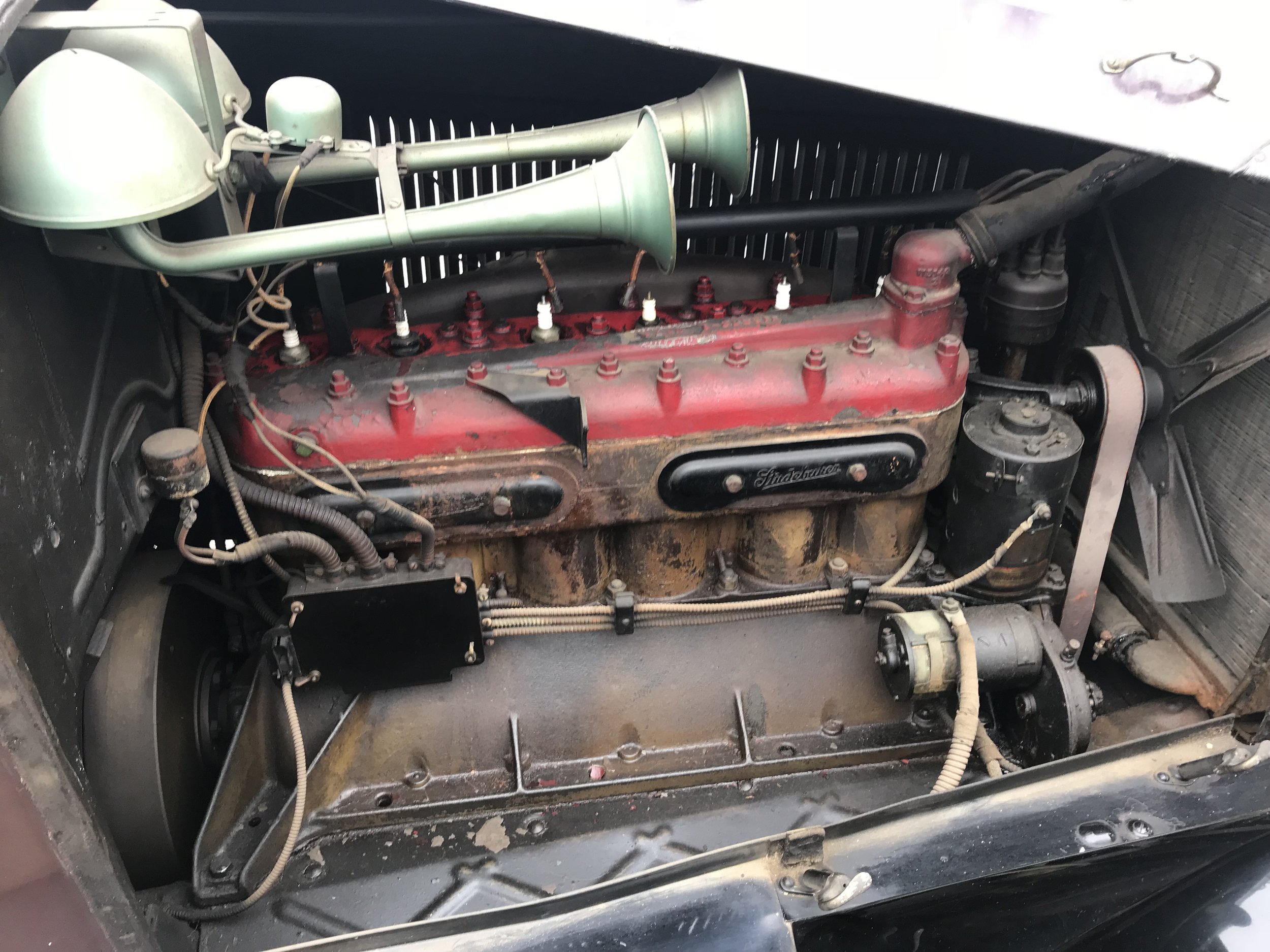1924 Big 6 Touring Studebaker Special
Introduced in 1918, the Studebaker's Special Six was kept in production until 1926. “The 1924 version of the Special Six featured a nickel-plated radiator shell and cowl-mounted inspection lamps. The touring car, such as this example, also featured nickel-plated grab handles and running board kick plates.” Known as the Special Six, the automobile was powered up by a 288.6 cubic-inch six-cylinder motor that developed 29.4 horsepower. The car's transmission was equipped with Timken adjustable bearings. Wheelbase size measured 119 inches.
Introduced in 1918, the Studebaker Light Six automobile was produced until 1927. The car was renamed the Studebaker Standard Six in August of 1924. Both the Light Six and the Standard Six were the least expensive of Studebaker's models while in production. A large variety of body styles were available for this vehicle during its period in production. The Light Six was renamed the Studebaker Standard Six Dictator in 1927. This was in preparation for the 1928 model year when the vehicle would then be known as the Studebaker Dictator.
The Studebaker Special Six was a vehicle created by the Studebaker Corporation from 1918 to 1927 and showed their mid-range model. This model was also available in an array of body styles throughout production. The Special Six was renamed the Studebaker Special Six Commander in 1927. This was in preparation of the 1928 model year when the vehicle then be known as the Studebaker Commander.
“The Model EG, or the Studebaker Big Six was also introduced in 1918 and lasted until 1926. Renamed in 1927, the Big Six became the Studebaker President. The President was the most luxurious as well as the largest Studebaker model.”
The Big Six was offered from 1918 until 1920 as only a four-door touring vehicle. This was the most popular body style for vehicles at this time. Beginning in the 1921 model year the price of enclosed vehicles came down, and buyers realized the benefit of both closed and semi-closed passenger compartments and a wide variety of body styles became available. The Big Six lineup great by the 1926 model year to include the specialty body styles of the dual-cowl Phaeton and the Berline sedan.
The following are: Model Year Changes
- Closed cars had courtesy lamps on the lower left-hand side of the cowl, right above the running board.
- New crease line was added to the hood
- Nickel-plated radiator shell was added
- Running board kick plates were added
- Standard body colors changed to Studebaker blue or Princess Louise Lake maroon
- The cowl had a new type of inspection lamp
- Touring cars received plated passenger grab handles
- Wooden spoke wheels were standard equipment










